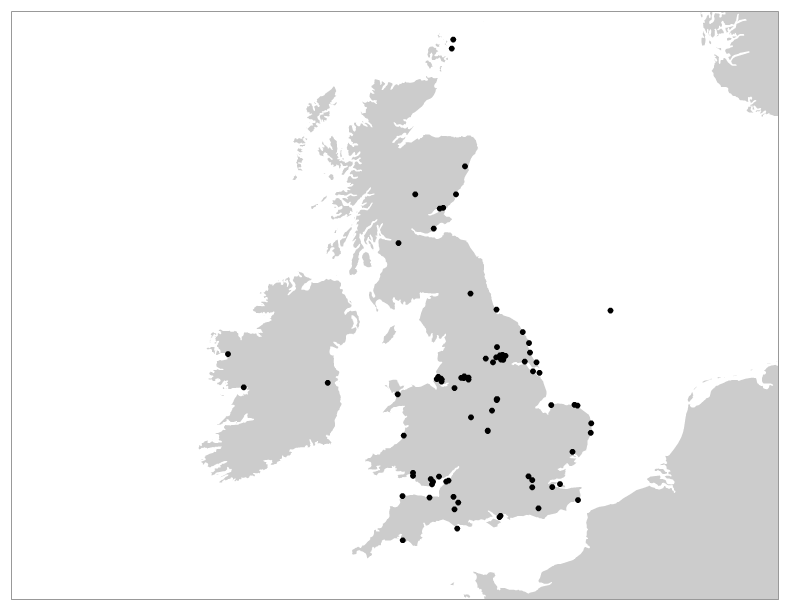Perhaps the first mass outbreak of mystery aircraft sightings took place in 1892 in Russian-occupied Poland, near the German border. The Manchester Guardian reported on 26 March that a ‘large balloon coming from the German frontier appeared about the fortress of Kovno‘. The Russian defenders fired at it, but it returned safely over the border.1 On 7 March, something similar had been seen near Dombrowa:
The balloon was coming from the south-west, and following a north-easterly direction along the Ivangorod-Dombrowa Railway, and this in spite of the fact that a north-east wind was blowing. The balloon disappeared behind the clouds, but reappeared about forty-five minutes later with a light burning (it was then half-past six in the evening), and following a course directly opposed to the former one. It is presumed that the balloon must have been provided with a highly perfected steering apparatus.2
A few days later came further reports: sightings ‘German balloons’ are now said to be ‘becoming frequent’. On 22 March a balloon was seen over a railway station at Pronshk[ol?], near Warsaw; the fortress of Novogeorgievsk; and the town of Kelets. The following day, people in Warsaw saw ‘a balloon over the city casting rays of light from an electric apparatus’. It stayed visible in the same place until 1am, when it moved to the west. A balloon ‘projecting powerful electric search lights over a large extent of country’ was seen in areas (presumably) near the Silesian border, towards evening or at night, apparently remaining motionless at a ‘great height for as long as forty minutes’.3
Clearly the Russians believed they were seeing German balloons. The Russian military fired upon one; and the New York Times reported that the Russian government intended to make a formal protest to Germany about the supposed overflights, citing ‘a breach of the military laws’.4 The Manchester Guardian suggested (on what basis, I don’t know) that ‘both the French and German military authorities are in possession of some sort of apparatus for steering balloons’.1 But we know now that this was not true. All anybody had were the usual static observation balloons, which were certainly not capable of the movement seen over Russian Poland.
So what was going on here? This was early on in the Russo-German antagonism. The Reinsurance Treaty between the two empires lapsed in 1890, and Russia was drawing closer to France. (The Franco-Russian treaty was drafted in August 1892.) Russian troops were pouring into Poland, whether for the annual exercises or some other reason was not clear. (Germans reportedly feared an attack; the Russian foreign minister had to assure the German ambassador that the mobilisation was only precautionary.) Russia itself was still suffering from a terrible famine after a crop failure in 1891, which had claimed the lives of several hundred thousand people over the winter.
So the situation in Russia was unsettled. The phantom balloons were thought to be piloted by German spies, and there is evidence that Russian authorities were worried about espionage, just as in Britain in 1909. For example, a Russian commander is reported to have to demanded permission to expel civilians from the border areas, 90% of whom were Jews, ‘who are regarded by the Russian authorities as certain to be friendly to an invading force, and as already acting as spies for the Germans’.3 This while Jews were being ejected from St Petersburg for the Pale of Settlement. Russians felt threatened by enemies within and without.
So in my usual way I’m suggesting that fears of war, of a technologically advanced enemy and a treacherous civilian minority combined to cause a phantom balloon panic, an early episode in the Scareship Age. Russians projected their fears onto the night sky. As for what actually triggered the sightings, Venus seems a likely candidate, as it was very bright and highly visible low in the western sky after sunset at this time. That can’t explain all the sightings (it had set long before 1am, for example), but it’s undoubtedly responsible for some of them.
![]() This work is licensed under a Creative Commons Attribution-NonCommercial-NoDerivatives 4.0 International License.
Permissions beyond the scope of this license may be available at http://airminded.org/copyright/.
This work is licensed under a Creative Commons Attribution-NonCommercial-NoDerivatives 4.0 International License.
Permissions beyond the scope of this license may be available at http://airminded.org/copyright/.





It’s about time someone asked Venus why it started WWI.
Could there be a trial? Would Venus fit the Hague?
What’s Venus ever done for us anyway?
Pingback: Airminded · New light on the Battle of Los Angeles